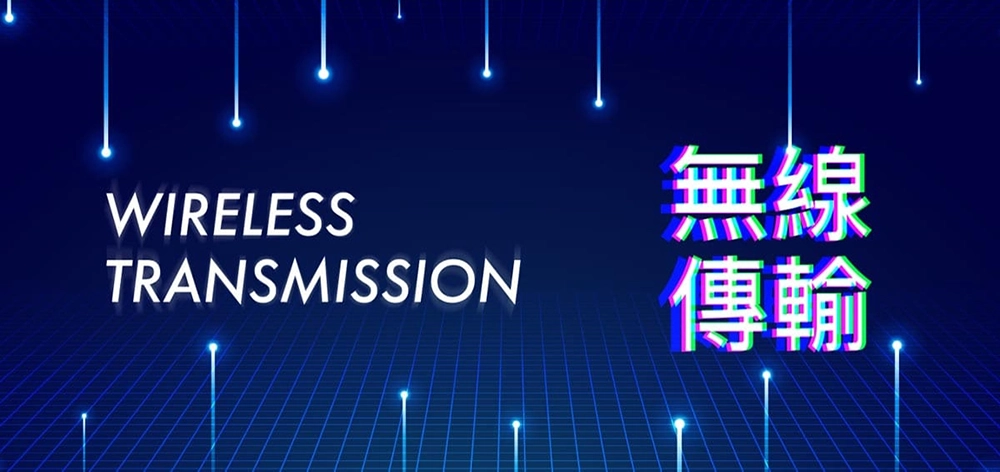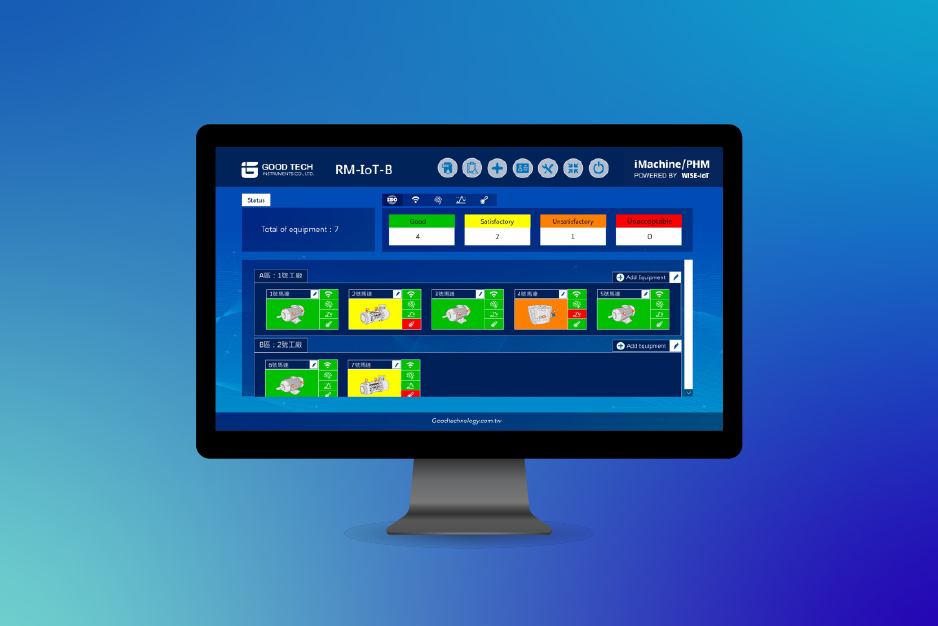What Are the Methods of Wireless Transmission?
FAQ|What Are the Methods of Wireless Transmission?In industrial environments, wiring can be difficult due to complexity, or facilities may cover large and distant areas. In addition to the high cost of cabling, the installation process itself is a major project. In such cases, using wireless transmission methods can be much more convenient.

Reasons for Adoption
How Wireless Transmission Helps Build Smart Factories
Residual-life Prediction
In the era of smart manufacturing and Industry 4.0, many industrial facilities still use wired transmission for data communication, as it remains the most stable method. However, wiring can be difficult due to environmental complexity, or the facility may span a large area. Besides the significant cost of cabling, installation is a major project. In such cases, using wireless transmission methods can be much more convenient.
Wireless Transmission Protocols
Unlicensed frequency bands commonly used for wireless transmission include 2.4 GHz and Sub-GHz. The 2.4 GHz band is widely used in commercial applications, including Wi-Fi and Bluetooth. These are ideal for short-range wireless communication, with Bluetooth offering fast transmission, low power consumption, and high security. However, due to a limited number of network nodes and susceptibility to interference, Bluetooth is not suitable for multi-point deployments. Sub-GHz, on the other hand, offers long-range transmission, less interference, and lower power consumption, making it more suitable for industrial applications.
Industrial environments typically have large-scale equipment distributed across vast areas. Since industrial equipment usually transmits lightweight data, Sub-GHz frequency transmission is more than sufficient.
For Sub-GHz frequencies, the 433 MHz band is commonly used worldwide for ISM (Industrial, Scientific, and Medical) applications. The 915 MHz band is popular in North America and Australia, while 868 MHz is widely used in Europe. The 315 MHz band is mainly utilized in North America, Asia, and Japan.
Types of Wireless Transmission Technologies
Wireless transmission technologies are generally categorized into short-range, mid-range, and long-range transmission.
| Types of Short-Range Wireless Communication | Brief Description |
|---|---|
| Wi-Fi | A wireless local area network (WLAN) technology based on IEEE 802.11 standards, commonly used in consumer electronics. |
| Bluetooth | A short-wave ultra-high frequency (UHF) radio technology, widely used in consumer electronics. |
| Li-Fi | A data transmission technology using visible light communication (VLC). The signal is interrupted when the light source is turned off. |
| NFC | Enables two electronic devices to communicate within a 4 cm range. Commonly used for access control cards and transit tickets. |
| RFID | Uses electromagnetic fields to access data stored in radio frequency identification (RFID) tags. Used for access control and identity verification. |
| Z-Wave | A wireless communication protocol for home automation, used for controlling household appliances, lighting, and central control systems. |
| ZigBee | A personal area network communication protocol based on IEEE 802.15.4, applied to vendor-defined program objects. |
| Types of Medium-Range Wireless Communication | Brief Description |
|---|---|
| LTE-A | LTE-Advanced (4G+), an enhanced Long-Term Evolution technology commonly used for mobile devices and data transmission. |
| 5G | A cellular network communication technology, an evolution of 4G (LTE-A), applied in mobile devices and telecommunications. |
| Types of Long-Range Wireless Communication | Brief Description |
|---|---|
| LPWAN | Low Power Wide Area Network (LPWAN) includes licensed bands like NB-IoT and unlicensed bands like LoRa, Sigfox, Weightless, RPMA, and IEEE 802.11ah. |
| VSAT | Very Small Aperture Terminal (VSAT) uses small dish antennas to communicate via satellites. |
Concept Explanation
What is LoRaWAN?
LoRaWAN defines the communication protocol and network architecture using the LoRa physical layer for long-range communication. It also manages frequency and power levels for all nodes. Devices in the network transmit asynchronously, sending data when available. The transmitted signals from end nodes are received by multiple gateways, which forward the data packets to a centralized network server. The network server filters duplicate packets, performs security checks, manages the network, and then forwards the data to an application server.
Features of LoRa
LoRa offers long-range communication, low power consumption, and supports multiple network nodes.
Long-Range Communication: LoRa's high sensitivity is attributed to direct sequence spread spectrum technology. It uses a high spreading factor to achieve significant signal gain, enabling transmission distances of up to 20 km.
Low Power Consumption: Typically, communication distance and power consumption are positively correlated. However, LoRa improves receiver sensitivity to extend transmission range while reducing power consumption. Unlike conventional frequency shift keying (FSK) that requires an 8dB signal-to-noise ratio, LoRa operates at -20dB. This energy efficiency makes it ideal for solar-powered devices.
Supports Multiple Network Nodes: A LoRa network consists of end devices and gateways, allowing one-to-many bidirectional communication. It follows a star topology and enables multiple communication groups within the same area.
Unlimited LoRa
Application Cases
Solving Wiring Issues & Ensuring Continuous Monitoring
Traditional manual inspection often struggles with inaccessible equipment locations or hazardous environments (high temperature or elevated areas), making comprehensive monitoring difficult.
The RM-IOT-B Wireless Rotor Health Monitoring System utilizes battery-powered LoRa LPWAN wireless receivers, enabling data transmission over distances of 500-800 meters (depending on obstacles). A single wireless receiver can support up to 500 wireless sensors.
Smart Aquaculture - Unlimited Wireless Monitoring
The WMS Aquaculture Water Environment Monitoring System transmits sensor data wirelessly up to 1 km to the central monitoring unit for real-time analysis.
With the rise of AI, big data monitoring and analysis in smart aquaculture have become essential. The WMS Smart Water Environment Monitoring System integrates easy-to-use transmission methods with various sensor systems, enabling users to monitor fish pond conditions in real-time and adjust environmental parameters as needed.




